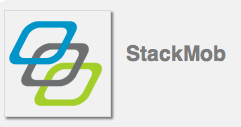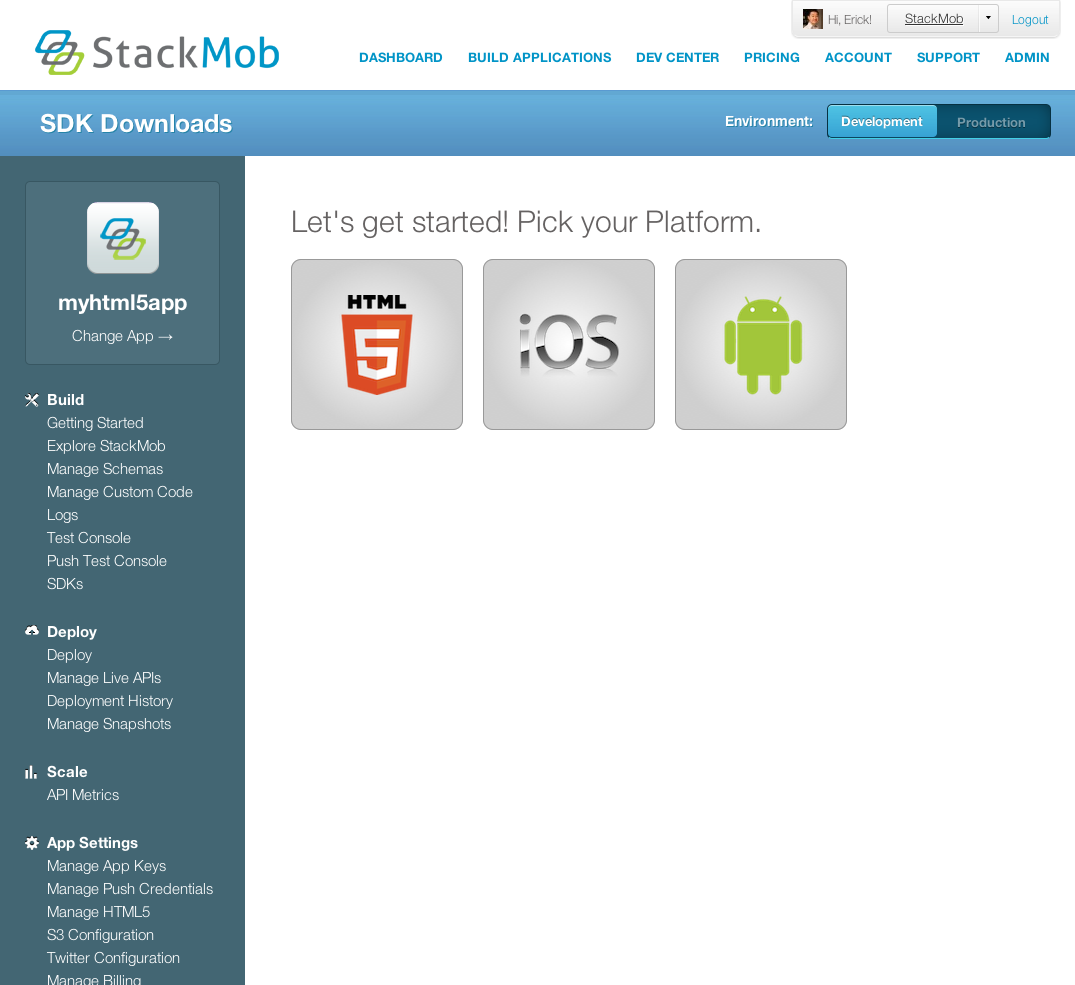You can’t call StackMob a “backend service provider for mobile” anymore, because as of now, it’s a full end-to-end solution. The cloud-based platform for mobile developers is today launching hosted HTML5 services that tie to StackMob’s backend, making it the first platform offering integrated HTML5.
Developers can use the new service to host full HTML5 apps for desktop, tablet or mobile, or can use it to host the HTML5 running within their native apps.
“We had to start with backend first because it takes much longer to build in the flexibility and scalability,” explains StackMob CEO Ty Amell, “but now that we have that system down, now we’re launching our hosted HTML5 solution.”
What this means is that developers can now upload and run their HTML5 from StackMob. The company is also offering GitHub integration to make doing so even easier. There’s a service hook for StackMob, so when developers push changes to their GitHub account, StackMob will pull those changes and put them onto Amazon’s S3. The company has also created a streaming API, where it will stream and cache those resources for its developers.
The benefit for developers is two-fold. First, they no longer have to worry about hosting their own HTML5, it’s just a part of the StackMob service. (And there’s no fee increase to use the feature). Secondly, with hosted HTML5, there’s the ability to tie in to other StackMob features, both current and forthcoming.
For example, thanks to the GitHub integration, StackMob can keep track of the history of the HTML5 deployments, and offer developers the ability to roll back changes. But in the long run, there are other benefits to hosted HTML5.
“There’s a lot we can do to increase the performance of HTML5,” says Amell. “We can push these out to CDNs, we can do a lot of internal caching, we can do adaptive serving where we look at what URLs are being served and we pre-fetch the next one,” he explains. “We can do things around developer tools where we add JS templates, making your app use HTML5 app cache out of the box. There are a lot of different technologies that we can add in the future that we can do because we host [HTML5].”
Also planned for the future is a build service, where developers can add native wrappers to their HTML5 apps (iOS, Android, BlackBerry Windows Phone). This will arrive by Q1, followed by advanced access controls, the use of CDNs, and auto minifying.
For StackMob, going the HTML5 route has always been on the roadmap. The company envisioned itself being an end-to-end service from the beginning, but now was the right time to make that shift, according to Amell. “We’re getting very close to where there’s a massive increase in network-connected devices,” he says. “It’s smartphones, tablets, cars, thermostats, cars, TV, even consoles – so when we think mobile that’s what we’re thinking.”
He’s also a big supporter of HTML5 as a platform. “Eventually, HTML5 is going to win because of this network-connected device world. You’re not going to have the ability to write for whatever proprietary language all these platform devices are going to be on,” he explains. “Even your toaster is going to be network-connected and have to talk to the cloud.”
Wait? Even my toaster? Oh dear lord.
“I bet you it will happen. Less burned toast.”

